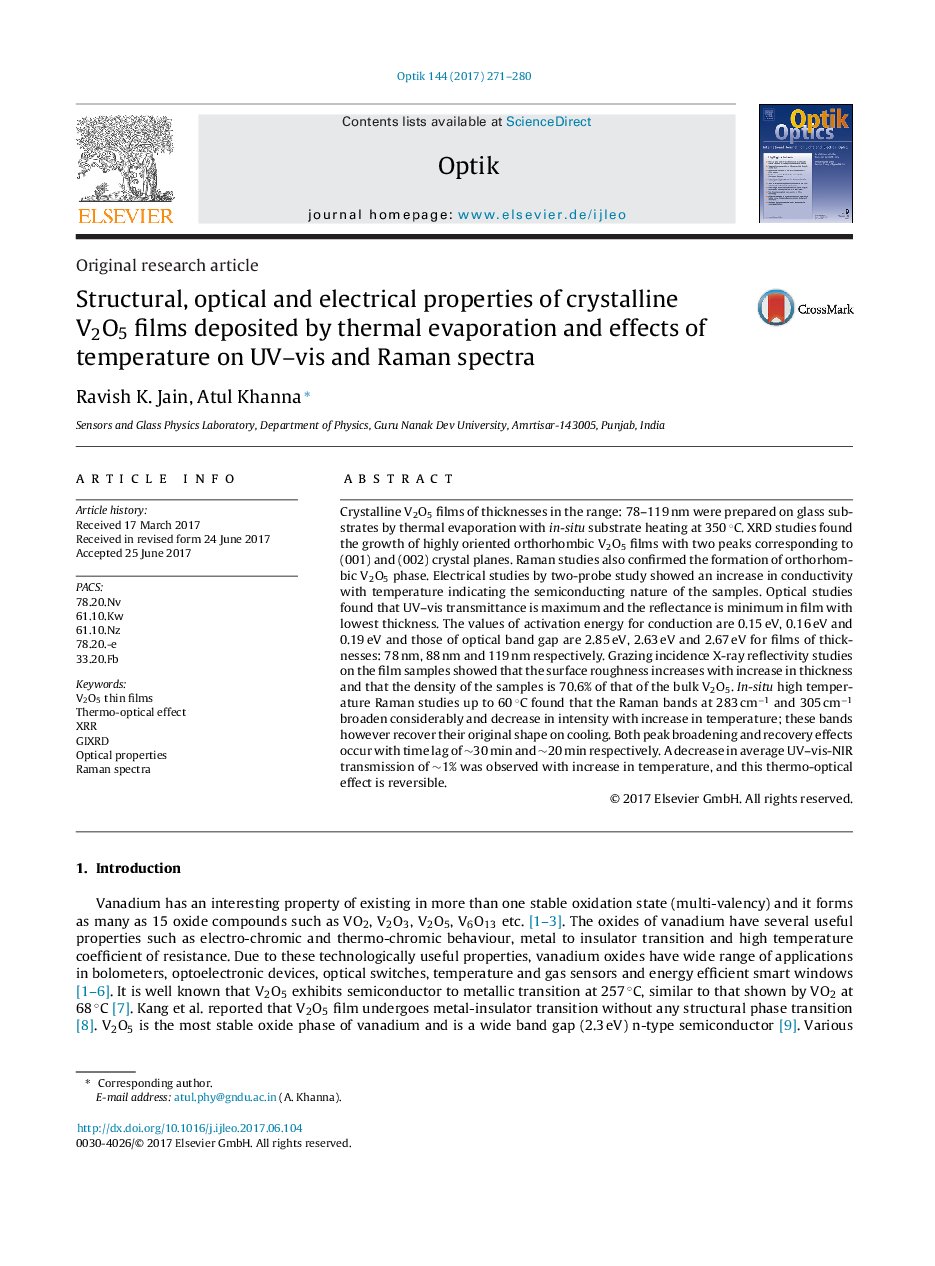| Article ID | Journal | Published Year | Pages | File Type |
|---|---|---|---|---|
| 5025021 | Optik - International Journal for Light and Electron Optics | 2017 | 10 Pages |
Abstract
Crystalline V2O5 films of thicknesses in the range: 78-119 nm were prepared on glass substrates by thermal evaporation with in-situ substrate heating at 350 °C. XRD studies found the growth of highly oriented orthorhombic V2O5 films with two peaks corresponding to (001) and (002) crystal planes. Raman studies also confirmed the formation of orthorhombic V2O5 phase. Electrical studies by two-probe study showed an increase in conductivity with temperature indicating the semiconducting nature of the samples. Optical studies found that UV-vis transmittance is maximum and the reflectance is minimum in film with lowest thickness. The values of activation energy for conduction are 0.15 eV, 0.16 eV and 0.19 eV and those of optical band gap are 2.85 eV, 2.63 eV and 2.67 eV for films of thicknesses: 78 nm, 88 nm and 119 nm respectively. Grazing incidence X-ray reflectivity studies on the film samples showed that the surface roughness increases with increase in thickness and that the density of the samples is 70.6% of that of the bulk V2O5. In-situ high temperature Raman studies up to 60 °C found that the Raman bands at 283 cmâ1 and 305 cmâ1 broaden considerably and decrease in intensity with increase in temperature; these bands however recover their original shape on cooling. Both peak broadening and recovery effects occur with time lag of â¼30 min and â¼20 min respectively. A decrease in average UV-vis-NIR transmission of â¼1% was observed with increase in temperature, and this thermo-optical effect is reversible.
Keywords
Related Topics
Physical Sciences and Engineering
Engineering
Engineering (General)
Authors
Ravish K. Jain, Atul Khanna,
